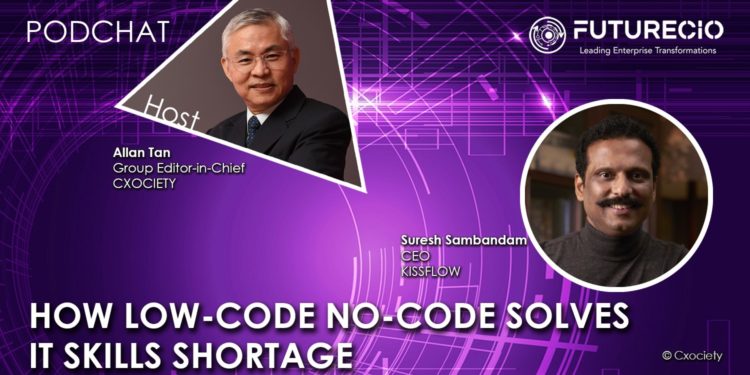A global survey of IT heads in the US, China, the U.K., India and Brazil by the Institute of Electrical and Electronics Engineers (IEEE) in November 2021 had some startling predictions for 2022:
- 83% maintaining strong cybersecurity for a hybrid workforce of remote and in-office workers.
- 73% managing return-to-office health and safety protocols, software, apps, and data.
- 68% deciding what technologies are necessary for their company in the post-pandemic future
- 73% recruiting technologists and filling open tech positions
The term “skills gap” refers to the bridge between the skills that companies need from their employees, and those that are available from workers. In the digital-first or digital-native era, this gap is fuelled by a combination of factors including advances in automation, AI and other technologies, along with current and would-be employees’ lacking the skills needed to interact with these new tech innovations.
These advancements have changed day-to-day operations, and upskilling programs at many organisations have yet to catch up. The result is a widening skills gap that can take a toll on company performance as well as employee confidence and productivity.
So, the skills gap of the future is two-pronged; organisations seek IT staff to fill the need for both interpersonal/soft skills and technical/hard skills. According to CompTIA, 79% of organisations are pursuing initiatives to address these gaps amid a tightening market for IT labour.
Suresh Sambandam, CEO of Kissflow, likens the technology to electricity. “It is running as a bloodstream across the organisation, which means in every nook and corner of the organisation, we need people with technical knowledge,” he opined.
The result, for him, is an explosion of requirements and people who are digitally native, digitally talented ability to put things together, not the demand for them is extremely high. And with that, the skill gap is being perceived in the market.
Semantic gap
Sambanham does not believe that the current evolution of low-code and no-code platforms does not directly alleviate the skills shortage. There remains in computing a gap between humans and machines when it comes to developing programs.
He called it the semantic gap – the difference between how humans think and machines work. It is this difference that makes it impossible to replace human programmers with machines.
“Software developers bridge that gap. They go to the business user and ask them: what do you need a software, give me a specification, give me your requirements. Then they translate, they understand that human need from the business and then translate that into the way machine understands,” he explained.
Narrowing the gap
He went on to say that the low-code and no-code paradigm takes a hybrid approach. He also acknowledged that current technology may allow machines to write up to 80% of the code. Humans are still needed to fill in the gaps.
Sambandam says low-code, no-code provides an abstraction so that people who have the domain knowledge, which is essentially the people who work in the business, get trained to use the low-code, no-code paradigm so that they can start building software themselves without having to be a professional programmer.
“That's the new paradigm that we are talking about,” he called.
Humans will not lose their jobs
He posited that if there are 20 million IT jobs globally, there is a billion business users. “Low-code, no-code is trying to empower one billion people to automate new processes in which there is no skill set, there is no talent available to automate that so that is where they are coming in,” he continued.
He goes on to say that as more and more no-code developers start building applications, they will require some help because they will only do 80% of it. “Now they need the remaining 20%, or 30%, depending upon the use case to be completed by a professional developer, which means they need more support,” he explained.
What to look for in no-code, low-code platforms
Sambandam is quick to point out that there is no competition between low-code and no-code – it is not a competition. He suggested the need for both.
“It's a unified platform, which seamlessly allows business users who have the domain knowledge, and its users who have the technical knowledge to collaborate in a single unified platform, so that they can, as an enterprise, handle the explosion of the digital requirement that is coming to your company. You need a platform, which does both rather than one versus the other,” he concluded.
Click on the PodChat player to listen to Sambandam elaborate on how low-code, no-code may alleviate the IT skills shortages impacting today – at least in the short-term.
- Do we really have a skills gap today?
- The idea of applications without programming has been an evolution as far back as 1954 with the programming language called autocode. The next one was Apple’s HyperCard in 1987, and today’s low-code, no-code platforms. Describe for us what LC-NC platforms offer today?
- Do you see LC-NC as addressing the current skills shortage?
- For old programmers, will LCNC spell the end of their cushy jobs?
- By the way, how would you differentiate between low-code and no-code platforms?
- For decades there is a divide that exists between IT and the rest of the organisation. Do you see LCNC as bridging that divide?
- We are into 2022, what is your advice to (a) IT leaders and (b) business leaders around strategies to alleviate the IT skills shortage?
- What does Kissflow do?




